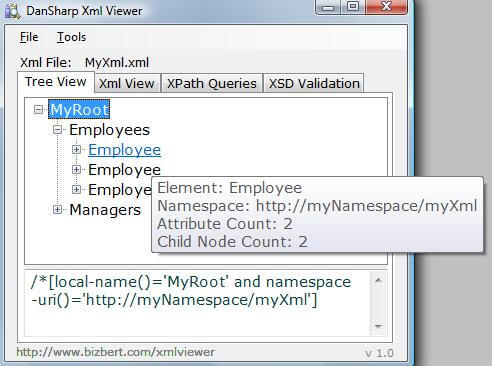

How to Set URL and Authorization Token in BizTalk Dynamic REST Post October 22, 2021.BizTalk SQL Queries – Orchestrations/SendPorts either way January 14, 2022.Changing to “xpath(msgCanonicalCombined, strXPATH) = strFileRcvdName ” fixed the error. Well, that is what I was doing I just made a copy/paste typo. Thus, the errors was subtly telling me that msgCanonical cannot be changed I need to build a new message. It turns out I also had a msgCanonical in the same orchestration. The issue was that in that orchestration, the message name should have been msgCanonicalCombined, as that was the message being constructed.
#BIZTALK XPATH FOR ATTRIBUTE VALUE UPDATE#
Inner exception: Illegal attempt to update the value of part ‘part’ in XLANG/s message ‘msgCanonical’ after the message construction was complete. NOTE: A few months after writing this post, I copied the above into a different message assignment shape, and got this error: “ Inner exception: Expression must evaluate to a node-set” – I think this happens if you put the String statement on the left side of the assignment statement. Only text-only elements or attributes may be selected”. “selected a node which is not valid for property or distinguished field retrieval, or it selected no node at all. Xpath(msgCanonical, strXPATH) = strFileRcvdName ġ) If you leave off the /text() statement, you might get this error: In this case, I only had one MESSAGE_HEADER child, but I still had to specify the subscript of. I then had to add the subscript, which is needed if you have an element that has “Max Occurs=UNBOUNDED”. I like to put the xpath in a string variable.

You can copy/paste the XPATH from the properties box on a schema or map (after clicking on the element or attribute). It is used to convert a “node” to a string value. The “String” function, is used only the right side of the assignment statement.

Seems like that page might have a mistake, is says “select the fourth book element”, but shows xpath of “/catalog/book”.Ģ) It doesn’t show a good example of how to set an XML element value. There are two problems with that page.ġ) Xpath subscripts ared 1-based and not 0-based.

This is the MSDN page for the BizTalk XPath statement. the left side of an equation or the equal sign)? I’m referring to a message assignment shape, in an orchestration, where you want The IsPromoted property of Distinguished fields in the Message context is set to False.How do you use the XPath statement on the left side of an assignment statement (i.e. Distinguished fields do not have a size limitation. However, if the orchestration engine does not find the property in the context, it will then initiate an XPath query to find the value. The evaluation of Property fields requires an XPath query, the evaluation of Distinguished fields does not require an XPath query as the pipeline disassembler populates the Distinguished fields in the context and the orchestration engine reads the cached values. Since Distinguished fields do not require a separate property schema, the evaluation of Distinguished fields by the Orchestration engine consumes less overhead than the evaluation of Property fields by the Orchestration engine. Distinguished fields cannot be used for routing or tracking. Distinguished Fieldsĭistinguished fields are message context properties that do not require a separate property schema and that are only accessible from Orchestrations. The IsPromoted property of Property fields in the message context is set to True. Property fields are limited to 255 characters. In order to write a field in a document to the message context as a property field, the document schema must have an associated property schema. You can explicitly elevate a field in a document to the message context as a Property field by editing the schema for the document in the BizTalk Server Schema Editor that is available in Visual Studio. Property fields are message context properties that are used by the BizTalk Messaging Engine for purposes of document routing, for message tracking, and for evaluation in Orchestrations. There are two different types of message context properties used by BizTalk as described below: Property Fields Message context properties are added to the message context throughout the lifetime of the message as it passes through BizTalk Server. For example, the following message context property describes the Interchange ID for a document: Each property in the Message Context is composed of three things, a name, a namespace, and a value. The message context is a container for various properties that are used by BizTalk Server when processing the document. The BizTalk message contains the document that was received as well as a message context. When a document is received by a BizTalk Server adapter, the adapter creates a BizTalk message for the document.


 0 kommentar(er)
0 kommentar(er)
